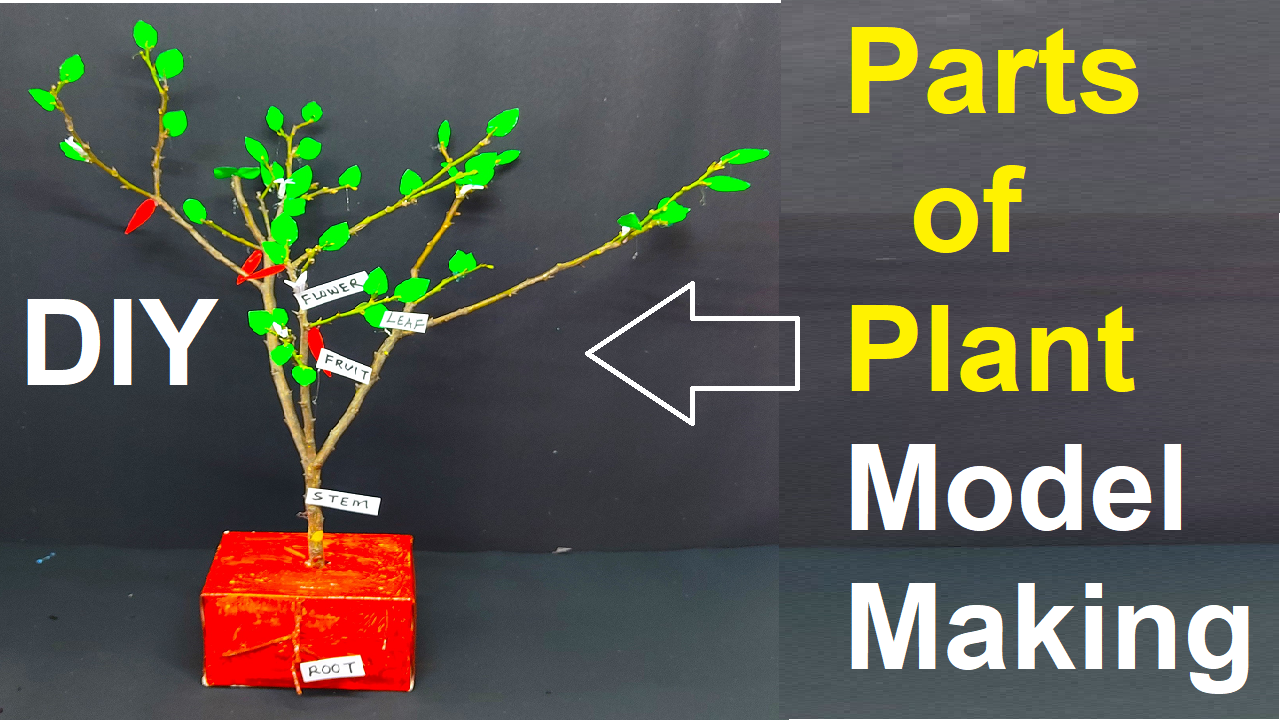Creating a model of plant parts using plant stems (dry and green), green paper, cardboard box, and dry roots can be a creative and educational project.

Here’s a step-by-step guide:
Materials needed:
- Plant stems (dry and green)
- Green paper or green construction paper
- Cardboard box
- Dry roots (you can use fake roots or dried plant roots)
- Glue
- Scissors
- Markers or pens
- Optional: Craft knife
Model Making Steps:
- Prepare the Base:
- Cut the cardboard box to the desired size for the base of your plant model.
- Attach Dry Roots:
- Glue the dry roots onto the cardboard base to represent the roots of the plant. Arrange them in a natural and spreading pattern.
- Create Stem Structure:
- For the stem, use dry plant stems and arrange them in a central structure, extending from the roots upward. Glue them together to form the main stem of the plant.
- Make Leaves from Green Paper:
- Cut leaf shapes from green paper to represent the leaves of the plant. You can cut out different shapes and sizes to mimic various types of leaves.
- Attach Leaves to the Stem:
- Glue the green paper leaves onto the dry plant stems. Arrange them along the stem to represent the foliage.
- Label Plant Parts:
- Use markers or pens to label the different parts of the plant, such as roots, stem, and leaves. You can also add details like veins on the leaves for a more realistic look.
- Optional Details:
- If you have different types of plant stems, consider adding details like bark textures using markers or cutting and gluing bark-like patterns from brown paper.
- Add 3D Effect:
- If you want a more three-dimensional effect, you can cut out small strips of cardboard and attach them to the stem to create a raised texture.
- Educational Information:
- Provide educational information about the specific plant you are modeling. Include details about the plant’s name, habitat, and any interesting facts.
- Presentation:
- Display your plant model during the exhibition, explaining the different parts of the plant and their functions. This can be an excellent opportunity to share knowledge about plant anatomy.

